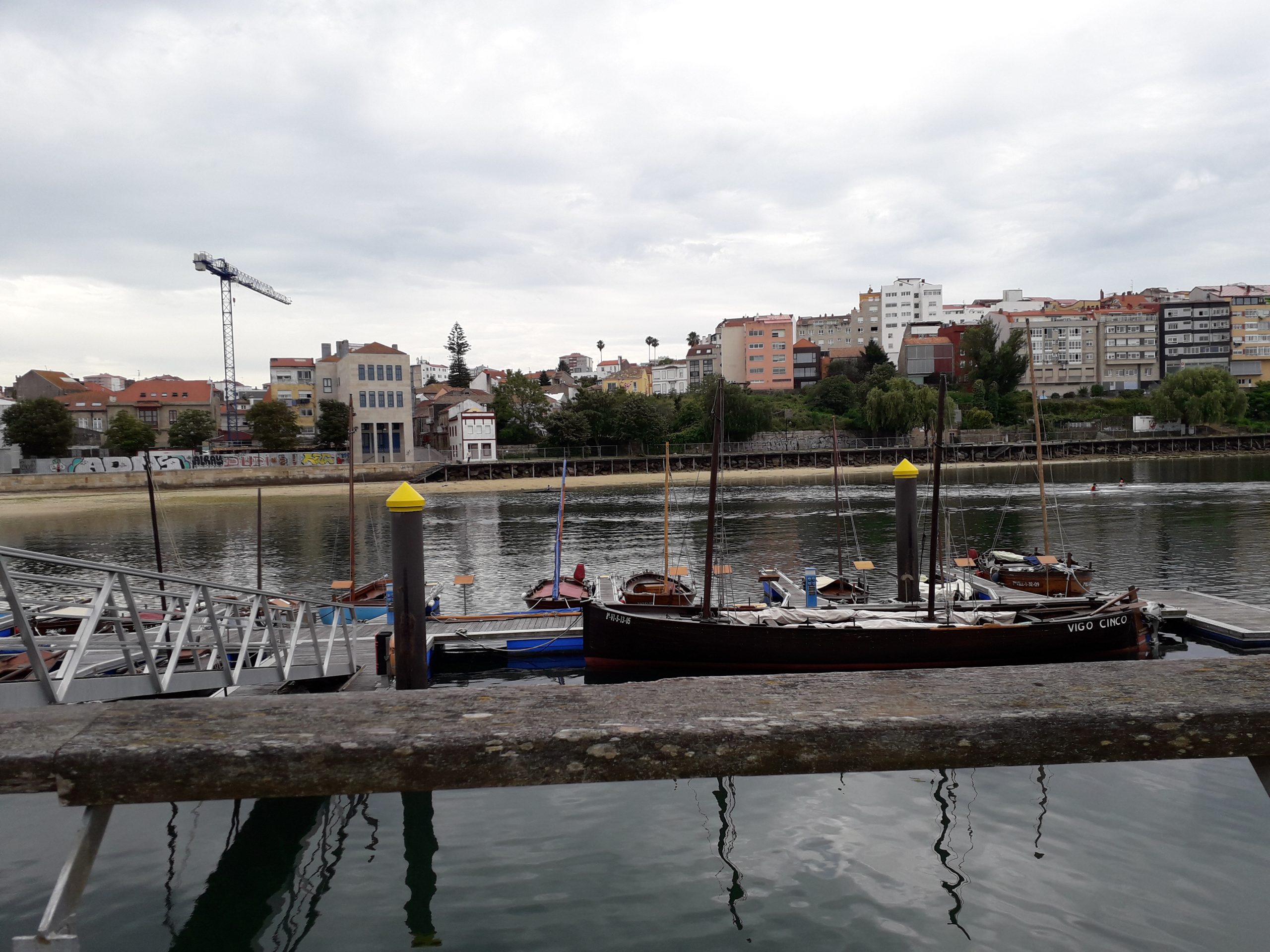Last Saturday 22th of June we had a likable activity with “Vigo Pesqueiro” program and the “Association of Artisanal and Sportive Sailors of Bouzas” to Know more about the very important heritage that its located in Bouzas

Our visit began low “The Waves of the Sea of Vigo” from “Martín Códax” medieval joglar , drawed by that the artist Pedro Sardine in that beautiful wall painting, that decorates with lyric the “Casa do Patín” , house of sailor typology that dates of 1639, when the sea arrived till here ; Currently, restored as a Library and Municipal Office of the District of Bouzas,
We say goodbye to the sculpture of “Asorey” , representing “Eduardo Cabello”, engineer director of the Works of the Port in 1909, and we continue by the Street of the “Alfolíes”, name that remains the store of salt that were here centuries ago and that it was of vital importance in the trade of the period. Next to the Church, we talked about the Templars and also of pirates, and we continue our walk till the workshop of the Sailor of Bouzas, a veritable museum, where began the first part of the explanation.


So good news that the riverside carpentry of was recently protected as a BIC (well of cultural interest).
After that we were till the dock, where we been showed the different traditional vessel most representative of all Galicia, their differents characteristics and their evolution:
Did you Know that the current rowing boat “traiñeras” of competition have their origin in the “traiñeiras” of fishing?.


And that the arrival in Galicia of the traiñeiras was not peaceful? There were verbal and physical confrontations between sailors that’s why this period is known as “War of the Sardine”
Something unique is that in the dock of Bouzas has the only “rowing boat” of fishing that exists in Galicia: “Vigo Cinco” built in the year 2005 by the School “Mar de Vigo” of the City council of Vigo,

All the dock is gonna be open as a museum during the summer months to the general public with afternoon schedule
We really wanted to thank all the participants and specially Braulio from the Sailors Association for his time and for transmitting with so much passion and knowledge all the related with ships, utensils and knowledgments of the sea.




